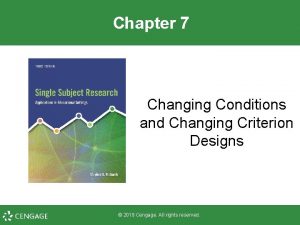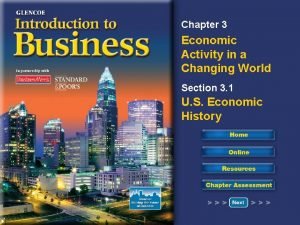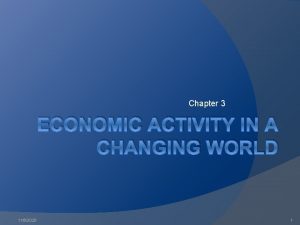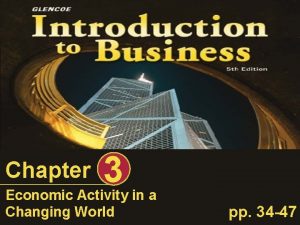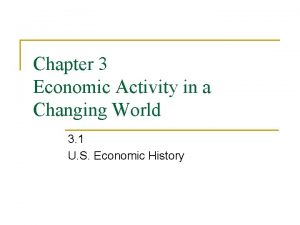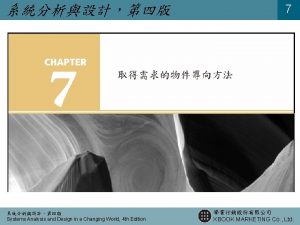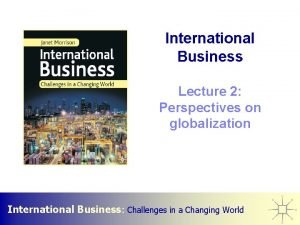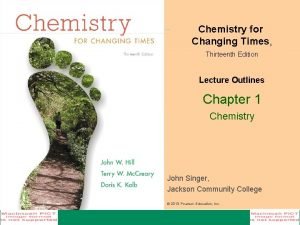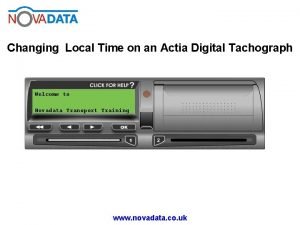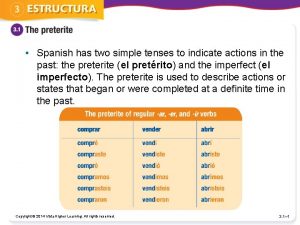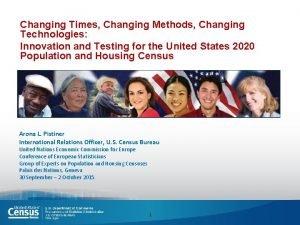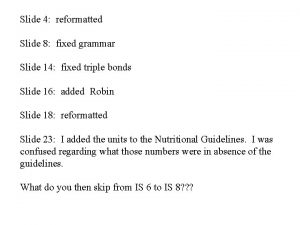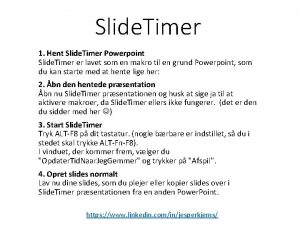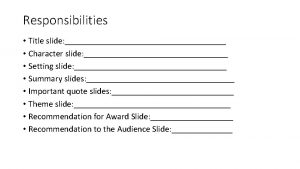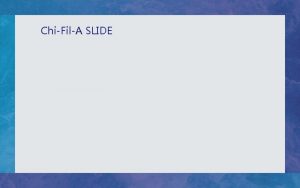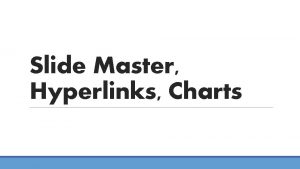Changing Economic Conditions SLIDE 1 Changing Economic Conditions

















- Slides: 17

Changing Economic Conditions SLIDE 1

Changing Economic Conditions Goals: 1. Describe the four phases of the business cycle 2. Explain causes of inflation and deflation 3. Identify the importance of interest rates

The Business Cycle Economic cycles. and business activity tends to move in Business Cycle refers to the movement of the economy from one condition to another and back again Business cycles are the recurring ups and downs of GDP and have 4 phases: Prosperity 2. Recession 3. Depression/Trough 4. Recovery 1.

Prosperity A period in which most people who want to work are working, businesses produce goods and services in record numbers, wages are good, and the rate of GDP growth increases. The peak of the business cycle. Does not go on forever

Recession A period in which demand begins to decrease, businesses lower production, unemployment begins to rise, and GDP growth slows for two or more quarters of a calendar year. May not be too serious or last very long. Often signals trouble for workers in related businesses Ripple Effect

Depression A phase marked by a prolonged period of high unemployment, weaker consumer sales, and business failures. Recession deepens and spreads throughout the entire economy GDP falls rapidly during a depression

Recovery The phase in which unemployment begins to decrease, demand for goods and services increases, and GDP begins to rise again. People gain employment Consumers regain confidence about their futures and begin buying again.


Checkpoint #1 What are the 1. Prosperity 2. Recession 3. Depression 4. Recovery 4 phases of the business cycle? What phase of the business cycle are we in right now? What evidence supports your claim? Take 5 minutes to get your answers then share with the class your thoughts.

Consumer Prices A problem with which most nations have to cope is INFLATION. An Increase in the general level of prices. Buying Inflation power decreases is the most harmful to people living on fixed incomes. Income does not change

Causes of Inflation 1. When demand for goods and services is greater than the supply When a large supply of money, earned or borrowed, is spent for goods that are in short supply, prices increase 2. Prices of goods and services usually rise so fast 3. Wages go up faster than prices, businesses tend to hire fewer workers

Measuring Inflation rates vary Mild inflation (2 or 3 percent a year) can stimulate economic growth. Wages rise more slowly than the prices of products Consumer A Price Index (CPI) number that compares prices in one year with prices in some earlier base year.

Deflation A decrease in the general level of prices. Occurs in periods of recession and depression. Products of prices are lower, but people have less money to buy them. The Great Depression of the 1930 s Prices declined 25%

Checkpoint #2 What are the main causes of inflation? Inflation is an increase in the general level of prices that occurs when the demand for goods and services is greater than supply.

Interest Rates The cost of money Have a strong influence on business activities Companies and governments that borrow money and consumers are affected by interest rates. People with poor credit rating pay a higher interest rate than people with good credit

Key Types of Interest Rates Prime Rate – the rate the banks make available to their best business customers. Discount Rate – the rate financial institutions are charged to borrow funds from Federal Reserve Banks Rate– the amount individuals pay to borrow for the purchase of a new home. Corporate Bond Rate – the cost of borrowing for large U. S. corporations Mortgage

Checkpoint #3 How do interest rates affect business activities in our economy? Interest rates can encourage or discourage borrowing or spending. Lower interest rates allow consumers greater spending power
 How to heel toe dance
How to heel toe dance Disadvantages of changing criterion design
Disadvantages of changing criterion design Chapter 3 economic activity in a changing world
Chapter 3 economic activity in a changing world Chapter 3 economic activity in a changing world
Chapter 3 economic activity in a changing world Chapter 3 economic activity in a changing world
Chapter 3 economic activity in a changing world Chapter 3 economic activity in a changing world
Chapter 3 economic activity in a changing world Slide and divide factoring method
Slide and divide factoring method Economic conditions
Economic conditions Economics unit 1 lesson 2 difficult choices
Economics unit 1 lesson 2 difficult choices Economic growth vs economic development
Economic growth vs economic development Economic growth and development
Economic growth and development Systems analysis and design in a changing world
Systems analysis and design in a changing world E to ie verbs
E to ie verbs Sprechen conjugation
Sprechen conjugation International business challenges in a changing world
International business challenges in a changing world Carsonian nightmare
Carsonian nightmare Changing time on digital tachograph
Changing time on digital tachograph Seguir preterite
Seguir preterite

